The Australian camper trailer world is very familiar with campers hailing from South Africa. They have a number of unique features that make them immediately identifiable, and generally they are of excellent quality and among the best of the imports that come into the country, making them excellent choices for travelling to the far corners of the nation. It only comes down to your personal choices of layout, functionality, and features to determine whether or not you choose one to be yours.
So it was with some measure of enthusiasm that we took some time out in the scrub with the curiously named Bush Lapa Badger 4i.
I can hear it now — what sort of name is that?
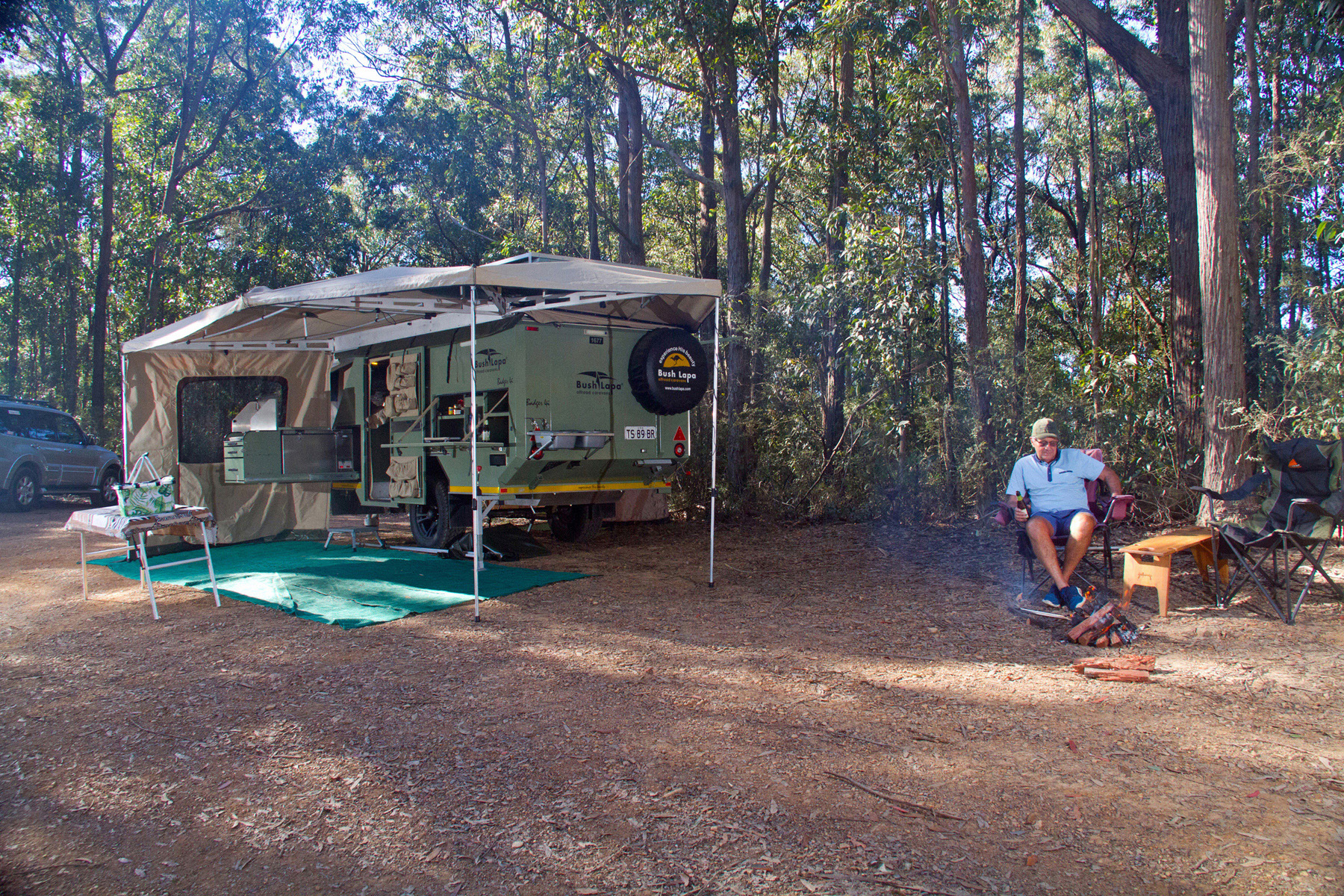


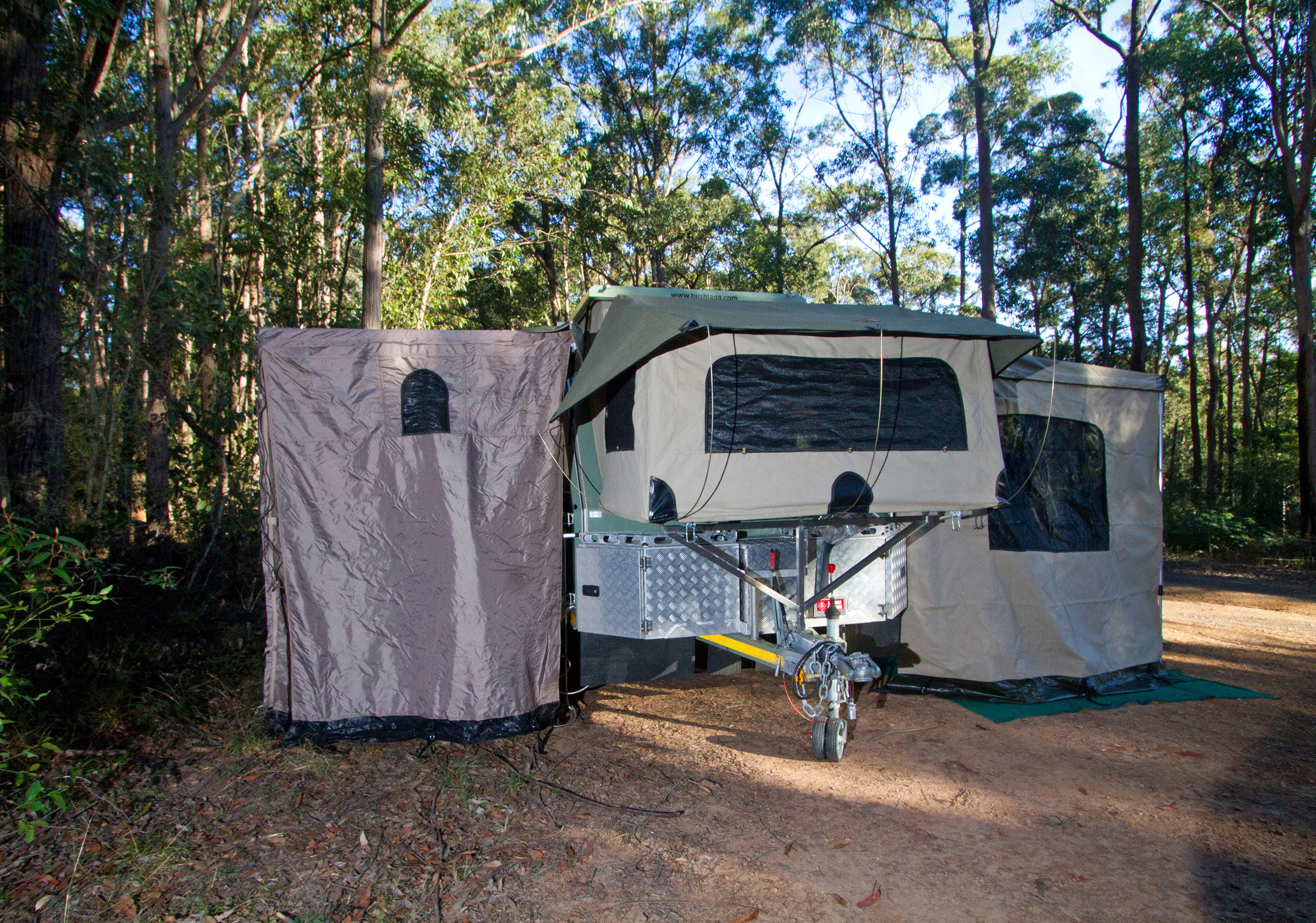
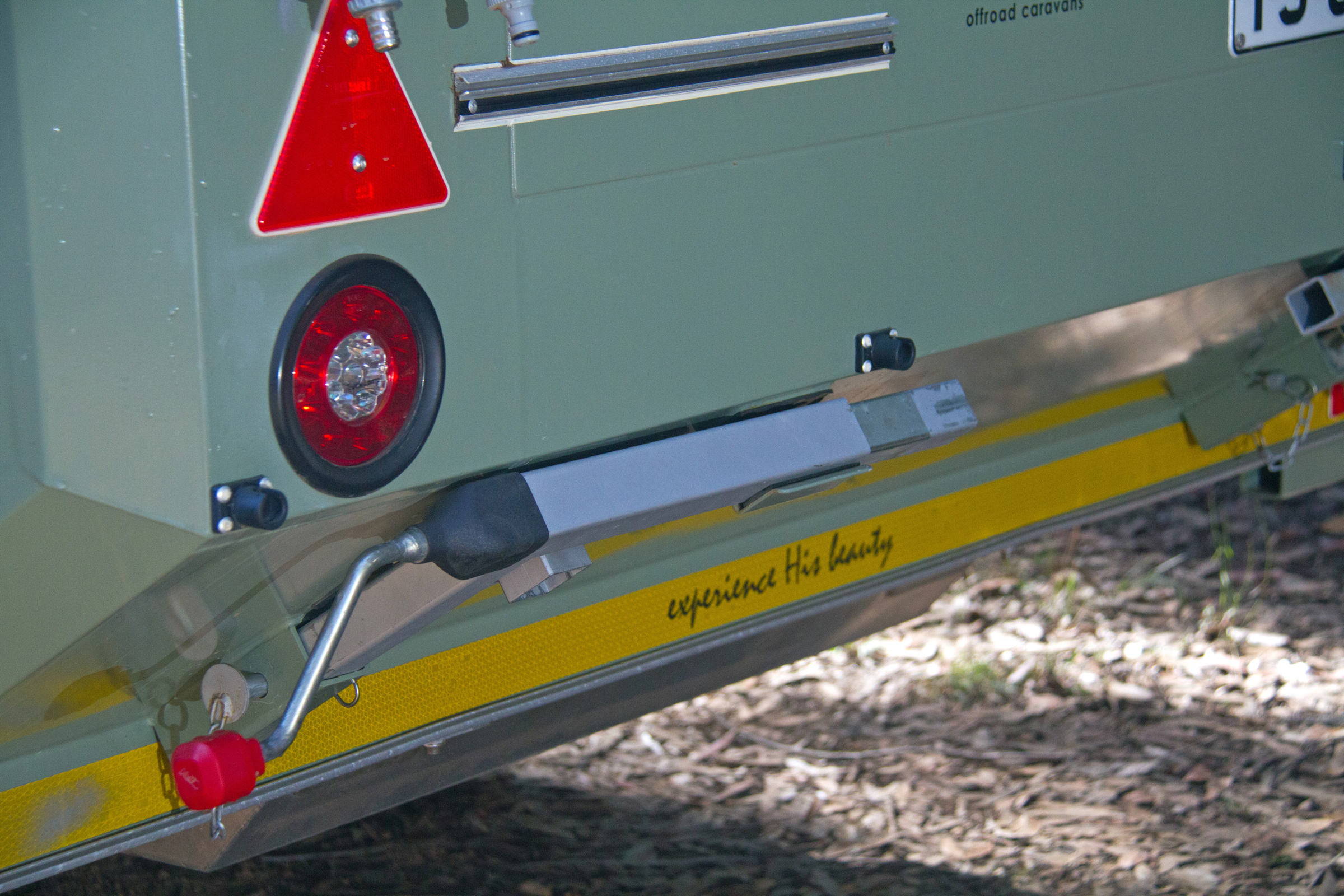
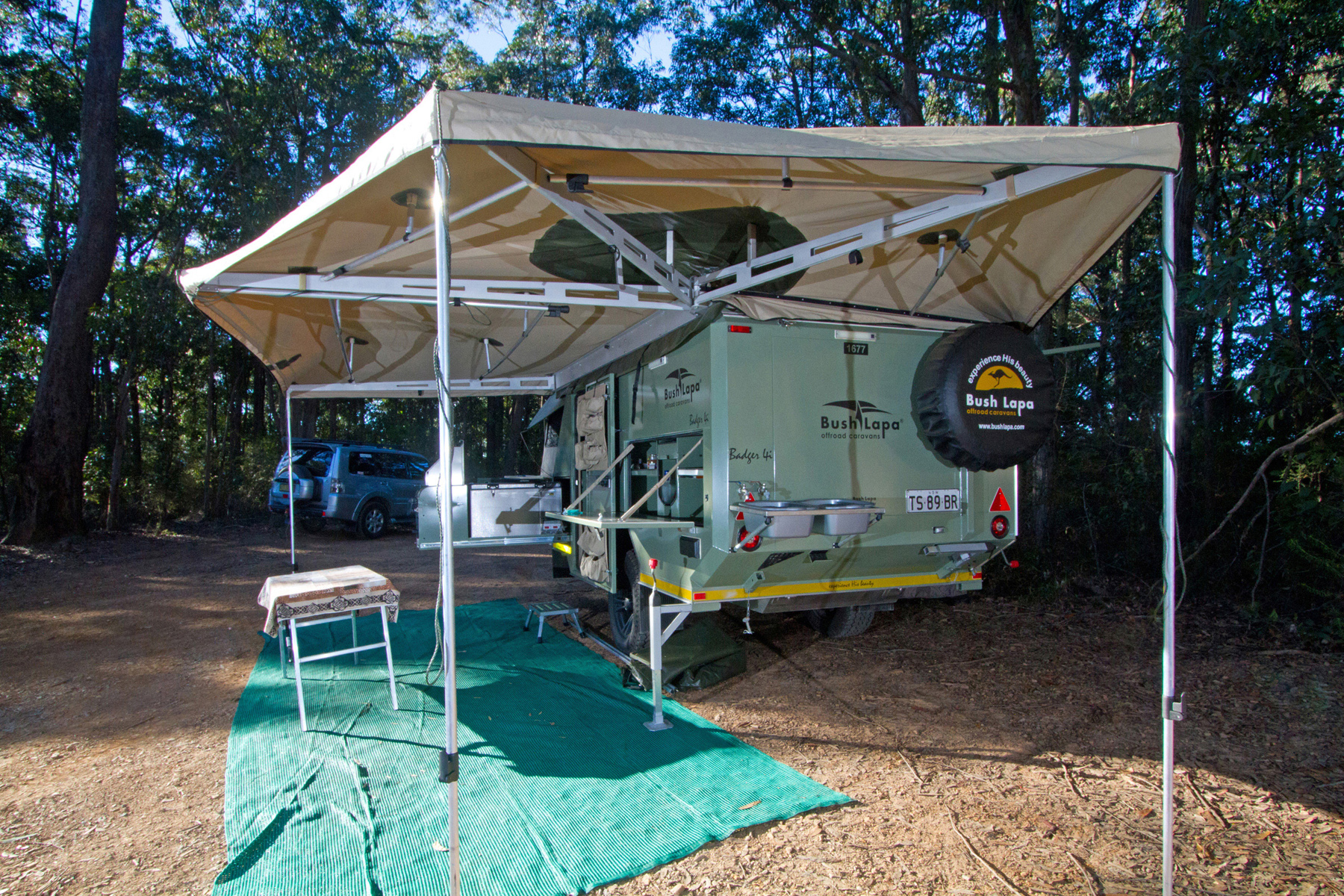
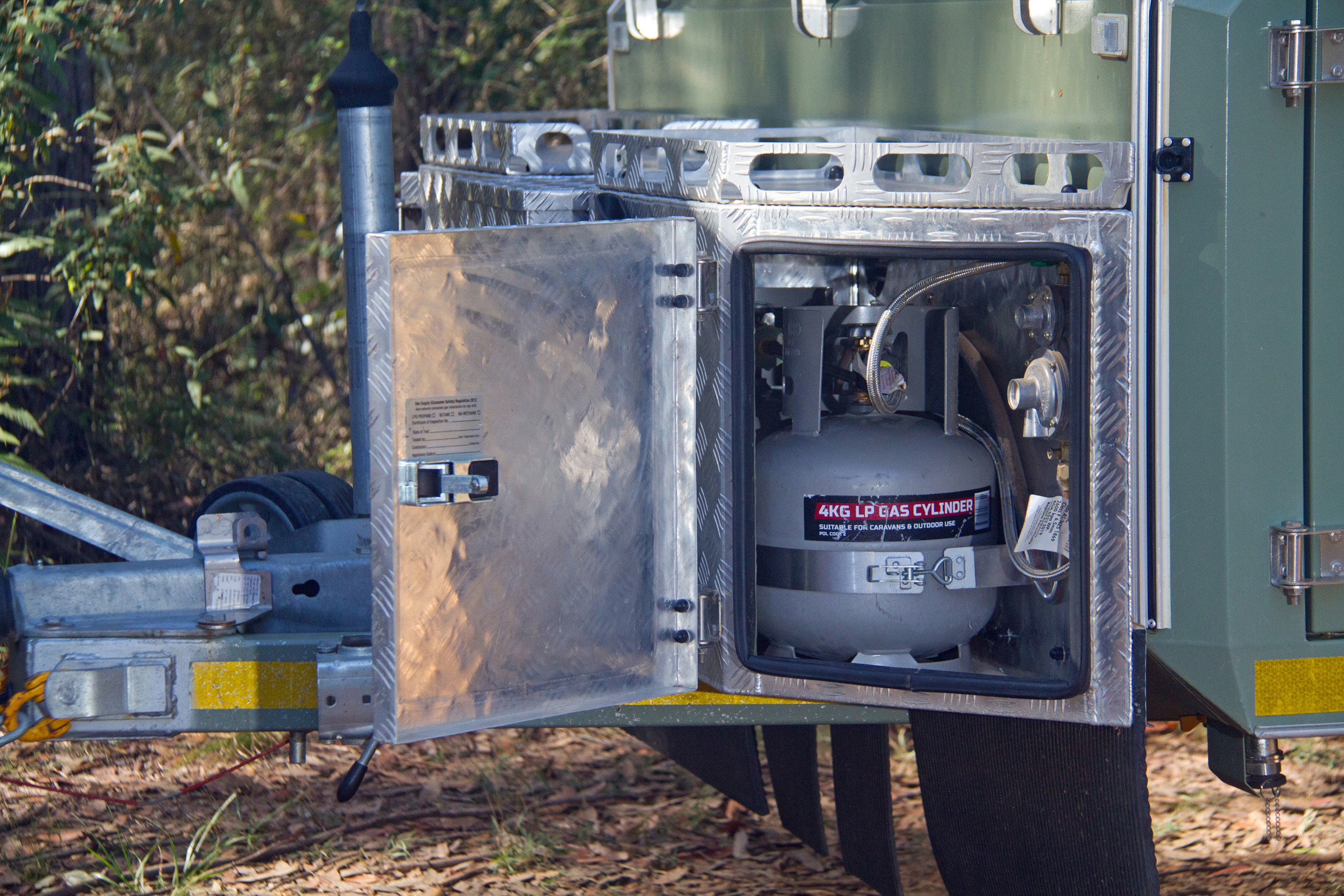
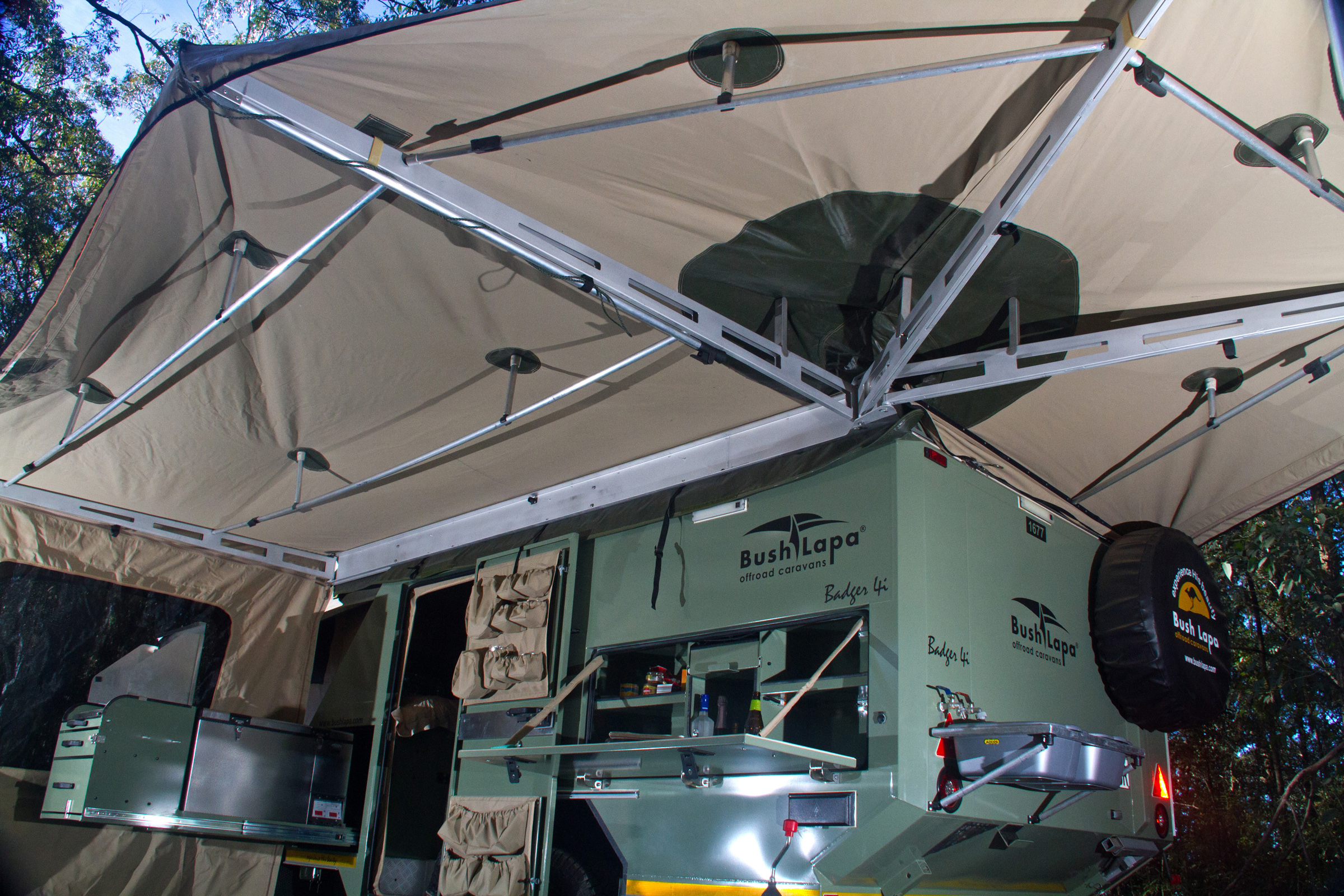
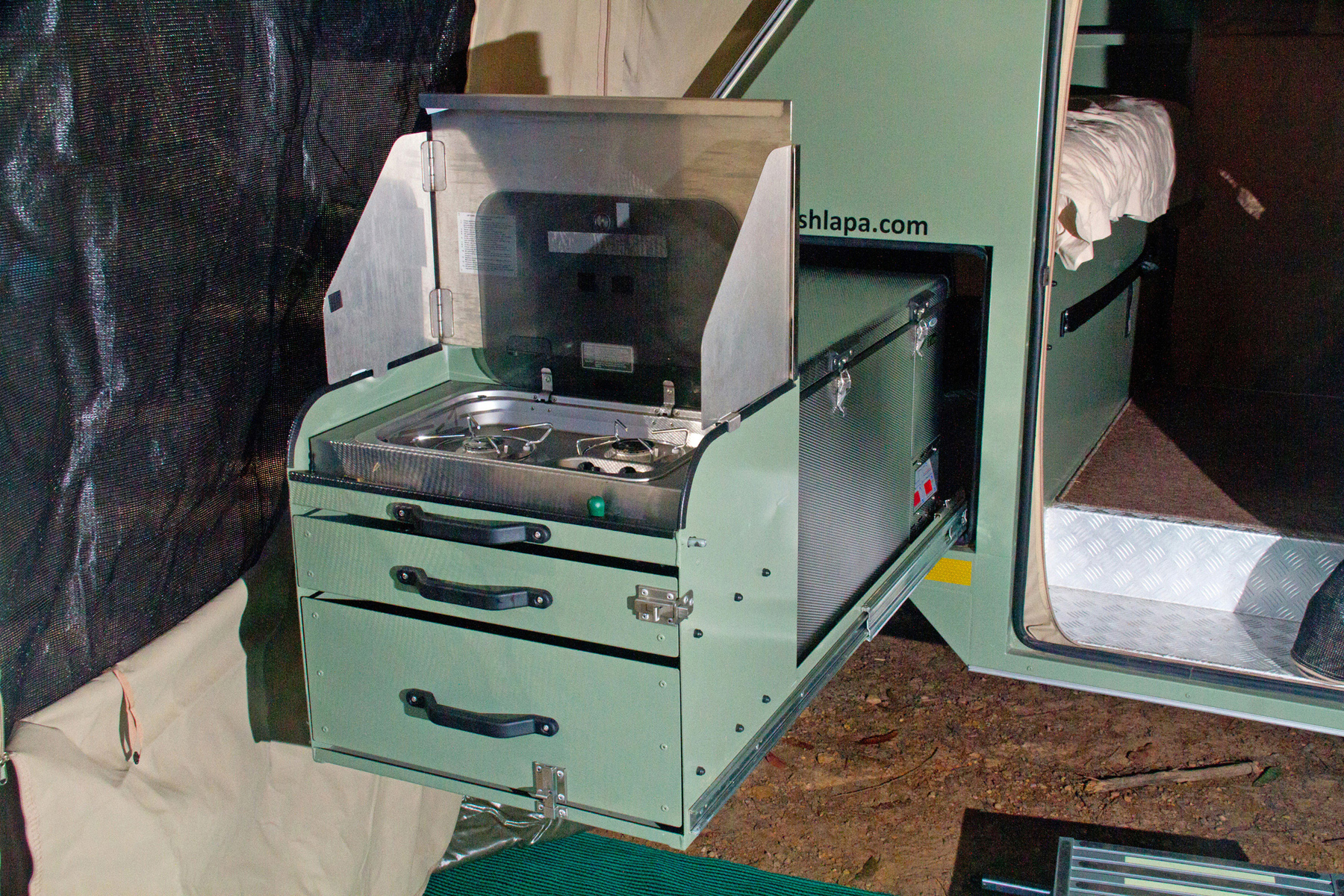
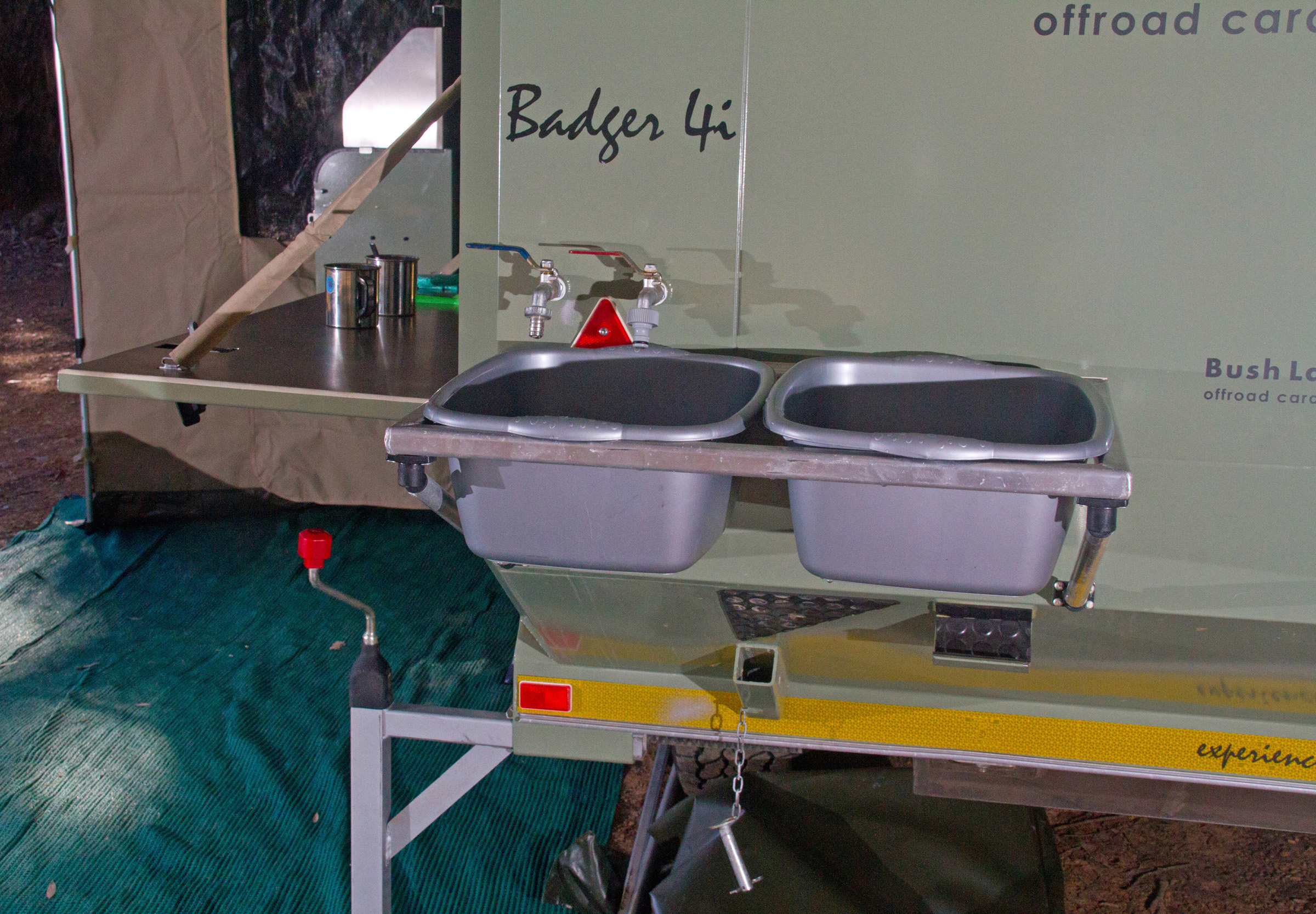
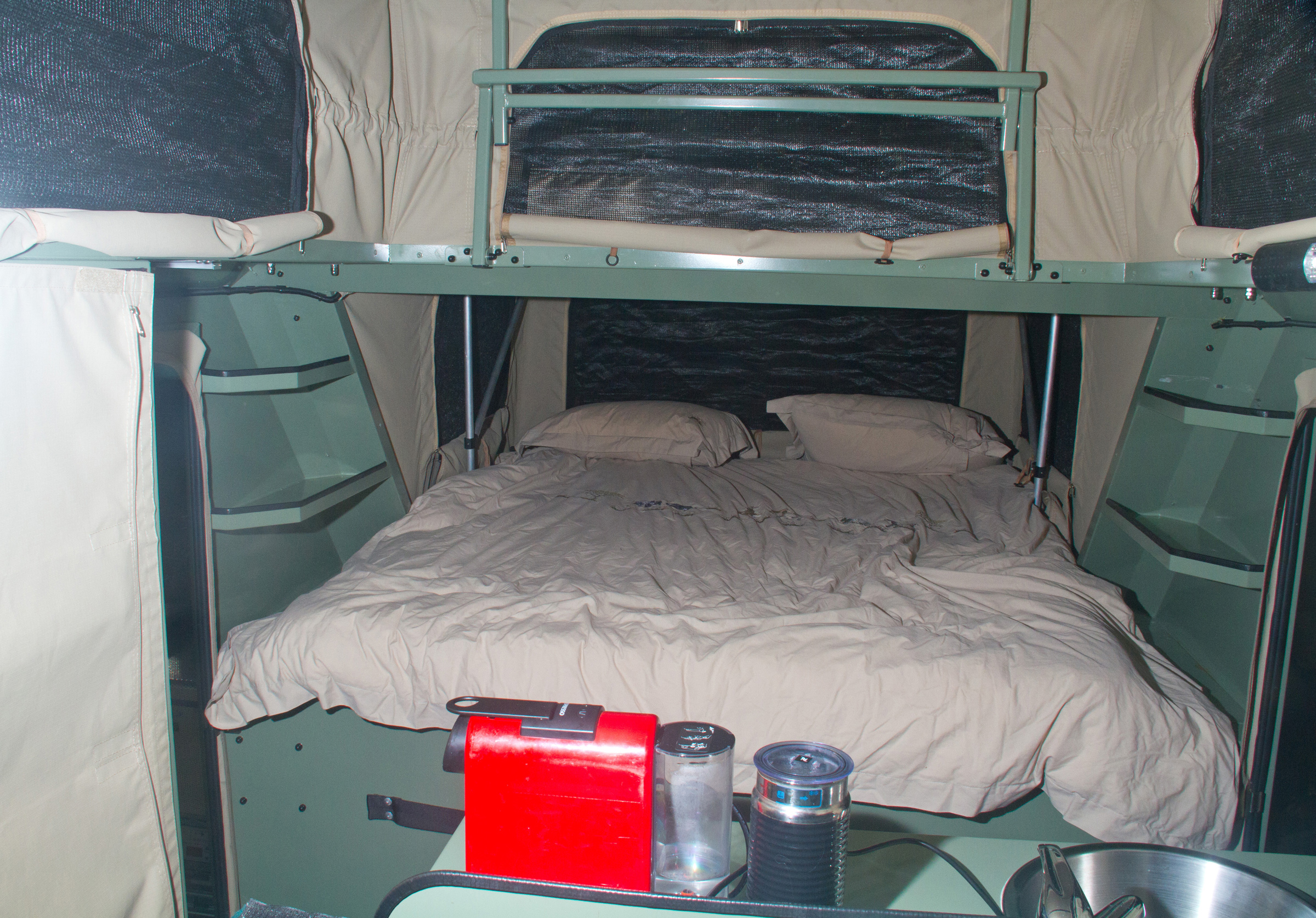
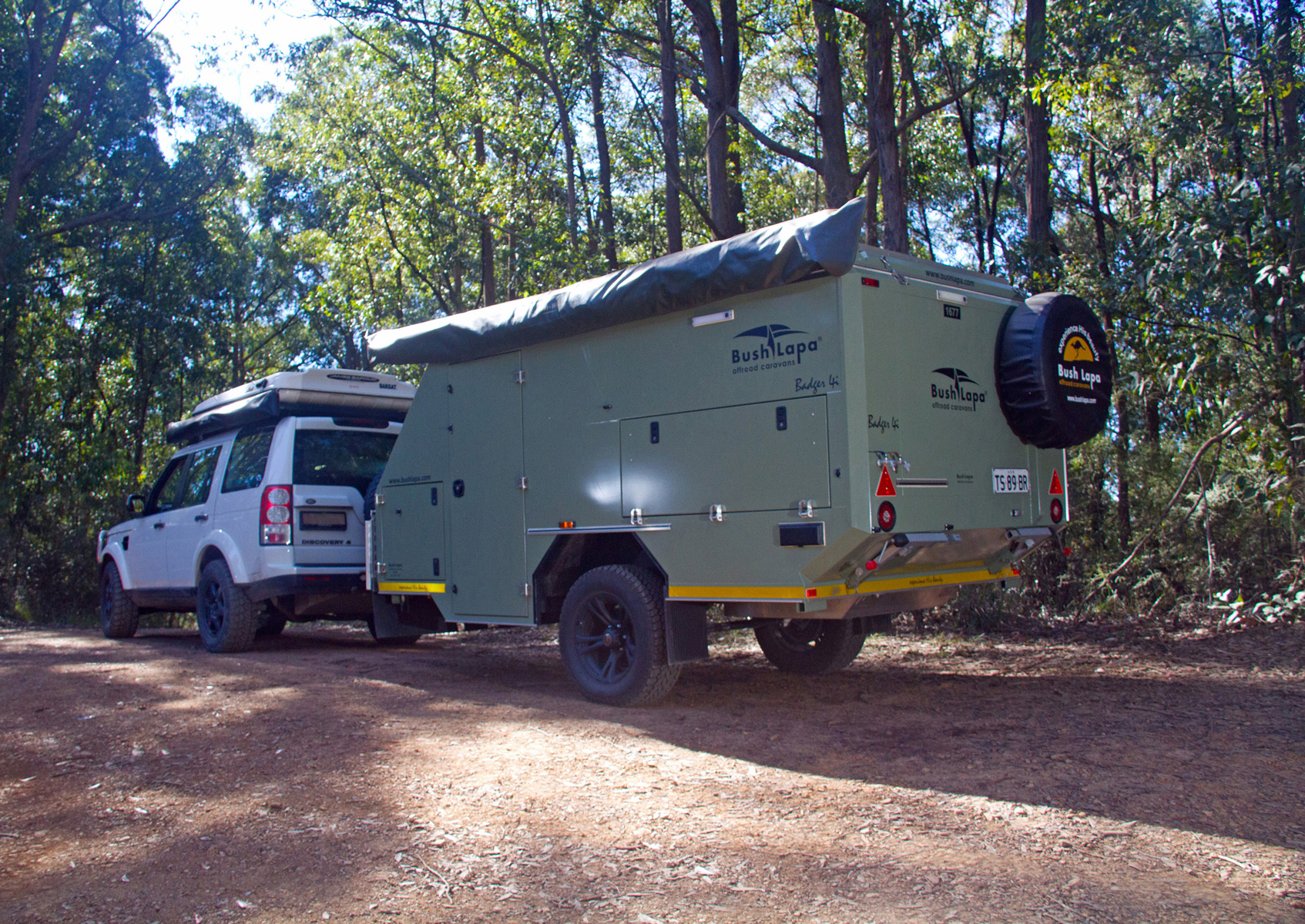
Bush is pretty obvious, but Anton Robbertse, the Eastern Australian agent for these relatively new campers, explained to us that Lapa is a Zulu word for enclosure — so the idea is that this is designed to become your corral, your safe space, when you are in the bush.

CAMPER CONSTRUCTION
The big advantage of the 3CR12 construction used in the Bush Lapa Badger for the chassis and external body construction is strength and lightness. The consequence for the Badger is that the whole van, as we saw it — with batteries, fridge, hot water service, roof solar, and all the other options fitted, is just 1140kg with a ball weight of 120kg — a remarkably light result for a hybrid that will sleep four, internal seating for the same, and plenty of storage.

Unlike many South African campers over the years, the Badger shows little sign of being ‘Australianised’, other than in places where it’s seen as a necessity in terms of repairability or where required by law, such as its gas fittings. This means that it still rides on its ten-layered leaf spring and shock absorber suspension. In fact, the springs are a slipper setup without any rear shackles. This, we were told, is to permit ease of maintenance and repairability in the bush if it was ever required.
The axle is a 2.5-tonne rated 50mm beam and the brakes are AL-KO offroad 12in electric drums to enable access to bearings and parts for repairability. Uniquely, despite the low weight, there is a break-away unit fitted. The whole package rolls on six-stud 17in matte black alloys with 265/65-R17 mud terrains.

The drawbar is relatively short, meaning there would be good ramp-over and departure angles. The latter is 22 degrees, but reversing is touchy and requires care. It is another very South African component. The exceptions to this are the AL-KO offroad ball coupling, which works with your standard 50mm ball, and the safety chains. Rather than simply welding the end link of each chain to the side of the chassis, there’s a neat and sturdy bracket welded to the chassis with a central pin which anchors the end of the chain via a hammerlock. It’s just a minor detail, but I liked it and it showed a willingness to think outside the box.

The floor of the Lapa is checkerplate aluminium with a carpet overlay. Other than this there is no insulation at all, which would tend to make life a little tough in the extremes of summer or on those damp and icy cold nights in the highlands during winter.
INTERIOR
Before progressing on this review I should explain the unusual policy of Bush Lapa on their fitout. The base camper, as offered but not seen by us, is a unit that is not equipped with many of the features that might usually be seen as necessities: cooktop, batteries, electronic system and so on. All of these ‘extras’ are available as options.
This policy is based on the potential that you might have your own preferred batteries, cooktop or whatever other component, so you can use them and save on having to buy a duplicate to what you already have. One of the basic campers would be a bit Spartan even if the price is well down at $58,957 plus GST, while the fully equipped camper that we saw comes in at $72,156.
To be honest, I can’t see anyone wanting to buy a hybrid camper without a cooker or batteries and while options are useful in fashioning a camper that meets your needs, this is a policy that’s going a little too far.

What I saw was a pretty well optioned combination. The front of the camper had two large aluminium front boxes, one to hold the two 4kg gas bottles, the other that can be used to carry some of the wide range of items needed around camp. The tops of these boxes have a perimeter frame to enable them to be used to carry firewood or other items, though this would have to be removed each time you set-up camp because of the fold-down door above.
To assist in controlling insects are zip-in flyscreens on each of the doors, though having to unzip them each time access is required might be a nuisance.
The camper has two wide and easily accessible doors — one on each side — with latches and lockable pressure seals. There are various fold out/down access doors to internal storage or user features. Those that swing out have a unique way of being held in position, with short radial arms with balls on each end fitting into matching plastic socket points on the adjacent body and the door. These rest on the inner lip of the door when travelling. It was neat and it worked, though I suppose there is always the risk of losing one of these stays.
Immediately in front on the passenger side is a large slide that provides for the fridge, which in this case was a 90L National Luna fridge/freezer. These are an excellent unit, with low draw and separate controls for each side. Power is supplied via an Anderson plug. At the outer edge was a triple deck set-up, with a cooker — a two burner Dometic — on top, complete with an excellent wind guard, with a shallow cutlery drawer below and a deep drawer at the bottom for your cookery gear.

Alongside the open door is a fold-down prep area. The bench which drops from the side is a 1320 x 500mm stainless steel clear space that provides plenty of room for plating up meals or preparing food, with a 280mm deep pantry behind that should be able to carry most of your food. Above this space is an LED light that has three levels of brightness in either white or yellow.
On the driver’s side is another lift-up panel which gives access to the interior. Immediately inside is the eating nook, with two, two-seater bench seats either side of a table. This can be lowered to make a bed base using the hinged 100mm thick seats/backings as a mattress. The big feature here is that a couple wanting an overnight camp stop can leave this made up as a bed, and getting a quick and easy night’s sleep would just be a matter of stepping inside and sliding under the doona. But even if you’re not needing that level of convenience you can lift that outside panel, zip up the flyscreen if needed, and sit and have a meal whilst soaking up the ambience. To that end it would have been nice to see a zip-in clear window so that even if it’s cold or windy out there you can still enjoy that ambience sheltered from the temperature.

Internally the access is pretty easy, and the camper comes with a simple fold-up entry step to assist. The pop-top roof is secured by four perimeter clips and the lift is easy, accommodated by two levered handles, one at each end. This produced an internal head height of 1980mm. There are six windows in the canvas pop-up walls, and as with all the other windows these were equipped with roll-down blinds and a coarse mesh. I was assured that all future campers coming to Australia will be equipped with midgy mesh — apparently we have smaller and more annoying insects than they do in South Africa.
If there are more than a couple travelling, there is a standard South African design feature of a fold-out front bed. Where the internal bed is a double (1200 x 1900mm), this front bed is a queen with a foam 100mm thick mattress.
Next to the batteries was a huge 3000W pure sine wave inverter which had been installed to provide power for a coffee pod machine. With the inverter comes a bank of six mains outlets along the back of the central bench. There are, in addition, eight other 240V outlets around the van.
Charging is taken care of by a 15A Victron mains charger for those times when you’re hooked up to 240V power, or a 20A DC-DC Victron charger for those times when you’re working off the alternator. There is a separate Victron MPPT regulator to look after the solar input.
Internal lighting was a bit sparse, with just the one central ceiling-mounted LED illuminator, again dimmable and with the option of white or yellow light. There were no reading lights at bed heads, with just a small yellow light above the extendable front bed. Reading lights and a light above the mirror would, I think, be very desirable for a camper of this quality.
Overall the interior is a bit cramped. No camper trailer has excess space, but movement would be limited to one person at a time in the T-shaped passageways and two people seeking items from one of the zippered cupboards would have to be negotiating access to stay out of each other’s way.
SUMMARY
The Bush Lapa Badger is a curious mix of good attention-to-detail (for example, every bolt head we could find was covered with a plastic cap) with a few missing items that we would today see as being fundamental basics on an offroad camper trailer of this standard and price. Things like limited internal lighting, a single USB outlet, and lack of any insulation are unfortunate gaps in the design.

This is not to diminish it as a whole. A hybrid camper at 1140kg tare, with 660kg load capacity and a stainless steel/aluminium build is not something you want to walk away from.
For interested potential purchasers, look closely at the functionality of how you would live with a few of the peculiarities of the design — fold-out front bed that need to be made up at each set-up, a complex awning, and so on. If you’re not put off by these then the price of $72,156 as we saw it, with the fridge, gas bottles and all the other options falls pretty much into the market niche for these sorts of hybrids. The one-year warranty is a little short for a camper of this price these days though.
Bush Lapa was developed in South Africa more than ten years ago, but has only been on the market for a little over a year in Australia and the unfortunate confluence of the COVID-19 limitations has meant that few people even know they exist, so take the time to check them out online at bushlapaaustralia.com.au and seek an opportunity to take a look if you’re in the market for a hybrid with a difference. There is also an agency in South Australia which can be contacted at dariocaravans.com.au.
SPECS
TRAILER
Tare 1140kg
ATM 1800kg
Suspension Ten-leaf slipper springs with shock absorbers
Brakes 12in electric drums
Coupling AL-KO offroad
Chassis/drawbar 60 x 100mm
Body 3CR12 stainless steel
Wheels 6-stud 17in alloys
Tyres 265/65R17 mud terrain
Style Hybrid
DIMENSIONS
Body size 4300 x 2040mm
Length 5440mm
Awning size 5785 x 2400mm
ACCESSORIES
Gas cylinders 2 x 4kg
Water 150L stainless steel
Cooktop Two-burner Dometic
Kitchen Side fold-down/slide-out
Battery 2 x 130Ah AGM
Options fitted AGM batteries, cooktop with wind protector, 160W solar panel, fridge, alloy wheels, gas hot water, gas cylinders, camp table, aluminium toolbox, shower door mirror, 3000W inverter
PRICE AS TESTED
$72,156
ENQUIRIES
Bush Lapa Offroad Campers
356 Tumbi Road, Tumbi Umbi, NSW 2261
Phone 0416 618 595
Email anton@bushlapaaustralia.com.au
Web bushlapaaustralia.com.au




